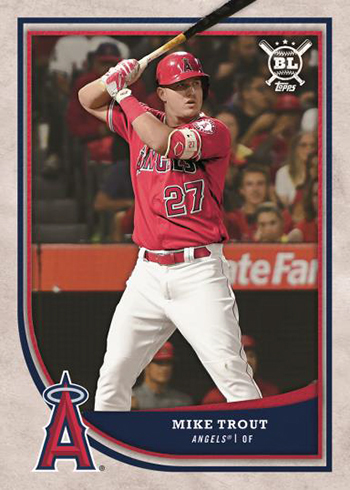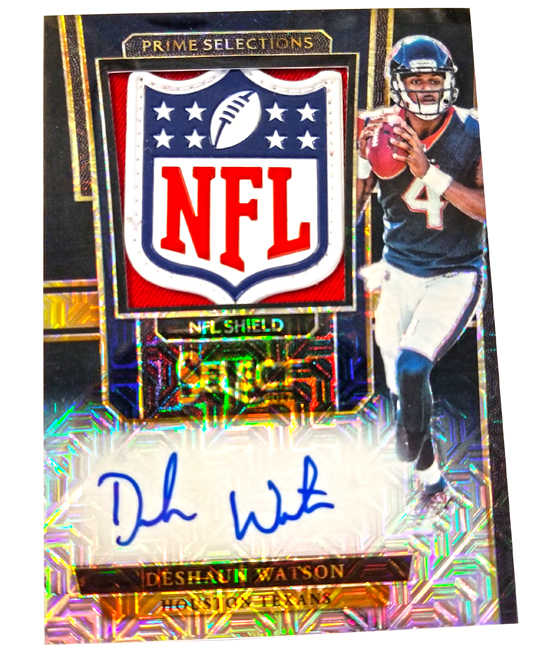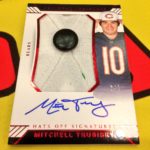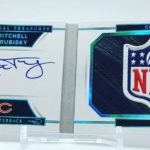 Back in the 1990s, before smart phones, before XBOX, before anything like we know today, collecting cards were popular with kids. If that seems like ancient history, its because it is ancient history, but that doesnt stop people from literally tearing off this scab year after year after year. Its the one discussion that no one seems to want to close, and the one effort that no one wants to give up.
Back in the 1990s, before smart phones, before XBOX, before anything like we know today, collecting cards were popular with kids. If that seems like ancient history, its because it is ancient history, but that doesnt stop people from literally tearing off this scab year after year after year. Its the one discussion that no one seems to want to close, and the one effort that no one wants to give up.
The notion of bringing that mass of kids back to the hobby isnt new, but the methods in which the card companies think it is possible dont seem to be either. Despite some great new tools and technology, all of which would be prime real estate to market a certain way, the card companies seem to trot out the same tired ideas with the understanding that it might accomplish the goal that hasnt been accomplished for over 20 years.
Over the weekend, Topps announced a new baseball set called “Big League,” whose sell sheet featured the tag line “Kids have spoken and Topps has listened.” Besides being just another cheap product, the tagline is so infuriating, I dont know what to say. Basically, one side of the argument is that bringing kids back will bring back a ton of money that has since left the hobby. Another side believes that bringing kids back will stave off the death of the industry itself, with new blood eventually growing up and becoming the future market the hobby needs to survive. Some believe both. I believe all of these arguments are valid, but also too expensive and worthless to try to execute. As a father of kids who make up the target market for products like Big League, I can almost certainly laugh at the approach.
First, my son loves opening packs. He likes baseball cards, he likes football cards, and he LOVES Pokemon cards. He likes the thrill of the unknown and pulling something that seems valuable. He also hates “kid products” because he knows there is rarely anything worth while in a pack of those cards. He wants to open the stuff I open, get the same shot at autographs that I do. His friends that he plays with are exactly the same way. I even took a group of them to the hobby shop and let them all pick out some packs for my son’s birthday. Guess what? None of them chose products like Big League will be – unless something fundamentally changes between what was discussed in the sell sheet and what hits the shelves.
The reason is that kids hate being pandered to. They want to feel like they are adults, even though the sentiment is likely the opposite for adults that open packs. Adults want to reclaim youth, and for many adults, that includes opening packs of baseball cards.
Personally, Big League feels like Topps is paying off a ransom demanded by either the league or by the retail marketing arms of Target and Wal Mart. Retail SKUs are so important to a product like this, not because so many of the people buying packs are kids, but because it provides access to a market that might be 1000 times the size of any local hobby shop. Maybe even 10000 times.
Putting cards in the aisles means access, and im sure that retail giants still believe that kids are inherently a target market for cards, just like they were 20 years ago. Excell marketing probably doesnt argue, despite the fact that so many of the consumers are adults.
Regardless of this approach, the product doesnt really go a direction that is that much different than other products occupying the same space. If that is the situation, what makes anyone believe this approach is better than any of the other products.
Well, any of the other products save two. There have been two products that could have taken a VASTLY different road to the same goal, a road that should have been MUCH more successful than it was. Those products were Topps Bunt and Topps Star Wars Card Trader. Both products were physical digital crossover sets that could have exploited the one thing that was never available back in the 1990s when everything started to go to shit – 24 hour access to a game that uses cards as a main driver of entertainment.
There are a number of things that my sons find entertainment in over ripping packs of cards – their iPad. Not only do they spend more time on the iPad than watching TV, but they absolutely love it. Providing access to cards through their digital appetite is something that should be at the front of any strategy that looks to reclaim children’s small attention span.
Instead, Bunt was left to rot on the vine, with the digital team taking very little interest in driving exclusive content only available in packs of the physical product. At least, from my perspective, that’s what it felt like. Im sure they saw it as a burden, trying to help the physical team gain access to their massive user base, instead of a true gateway for children to buy cheap packs and get direct content delivered through their phones at the same time.
Topps could have built a giant campaign around it, doing the things that they have tried over and over again with cheap and terrible products that never offered anything more than a more inexpensive price tag. It comes down to a very simple concept – why are you trying to capture a market through a method that none of them use? Its like trying to sell people cable subscription packages at a cord cutters convention. Not a great approach.
Digital is the answer, but at that same time, the apps havent exactly been kid friendly lately either. Most of the digital apps from any of the companies realized pretty quickly that they had to sell a lot of content to people with actual money to stay funded by companies with no experience building video games. That’s entirely the wrong approach, as we have seen with how Pokemon incorporates a digital element to all of their apps and games.
Im not saying Big League wont be a fun product. It looks good. Im just saying it wont do anything like what it is supposed to do. Its not because kids dont like cards when they are exposed to them, its that the way to capture kids isnt through offerings built around the same set configuration, just less expensive.
Right now, its better to invest in adults with money, as it is less expensive to execute and seems to be more accessible through adults and their die hard fandom surrounding their favorite sports teams. Kids dont experience sports like that unless they have parents that do, and just like cards, adults who collect should bring in more kids that collect.
I just hope that down the road people stop acting like Helen Lovejoy and wondering why people wont think of the children. I want the companies to spend money investing in things that might actually make a difference. A well funded and well executed digital strategy is that answer, and if Topps or Panini could help both the leagues and the mass retailers understand how important that is, I think my refrain would be different.








